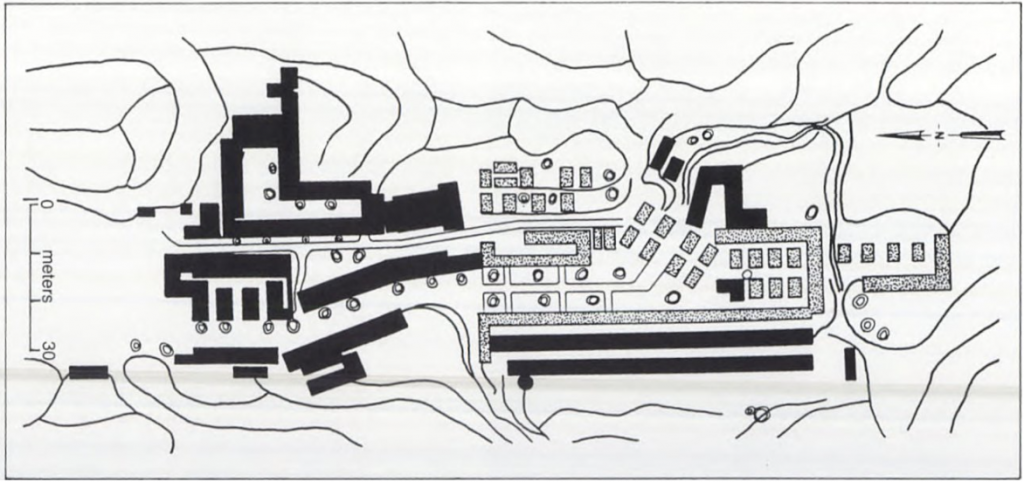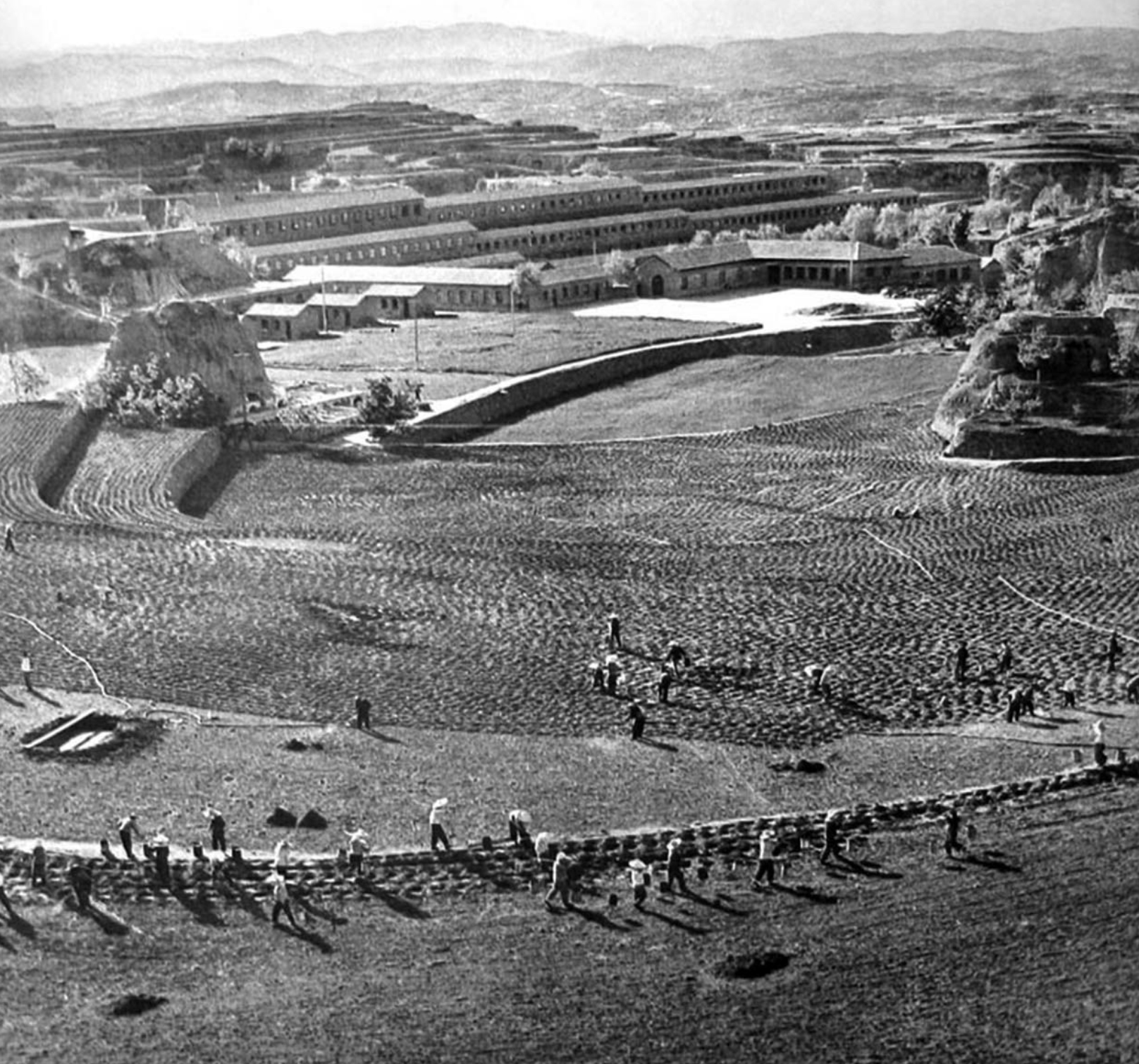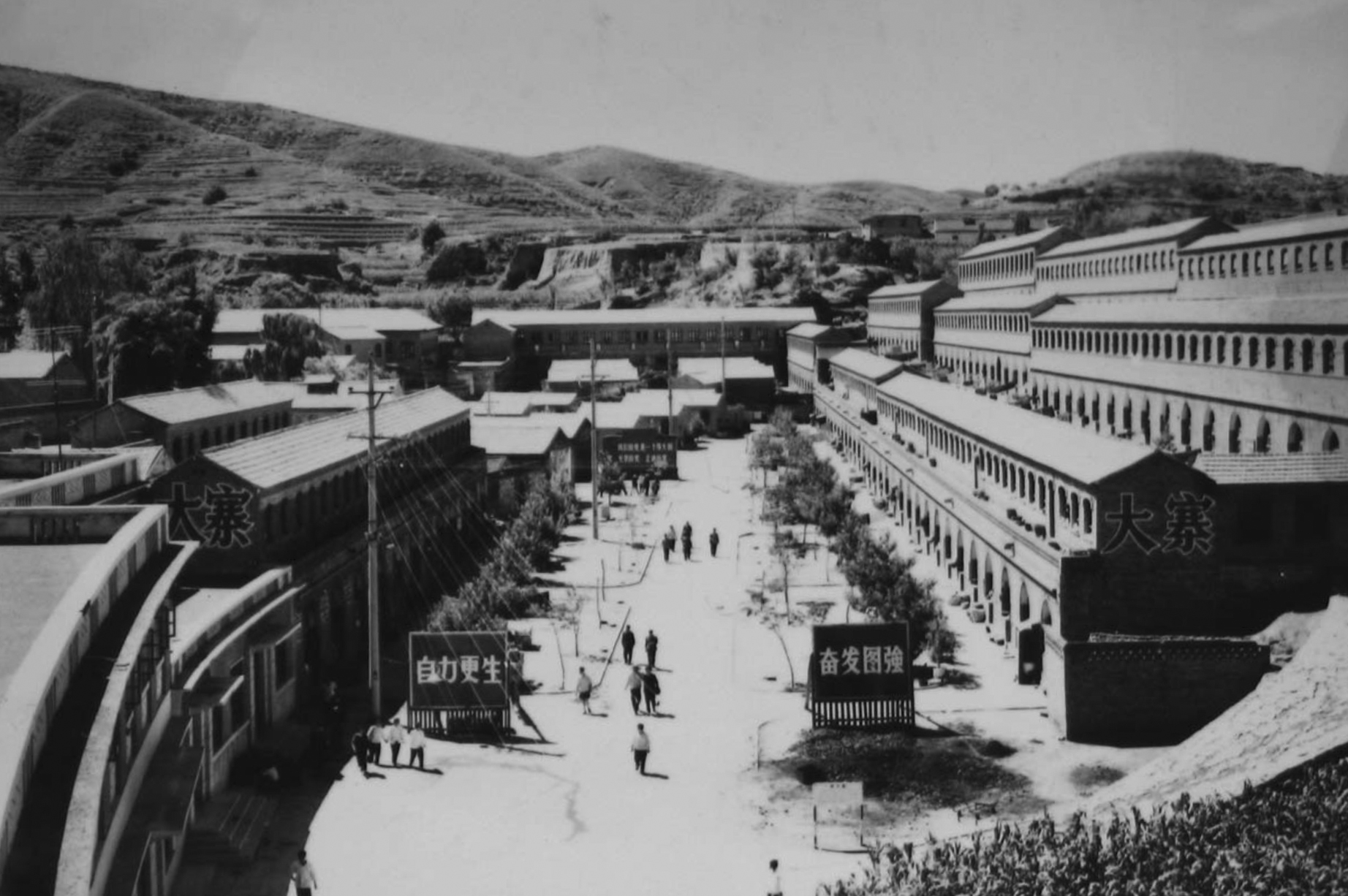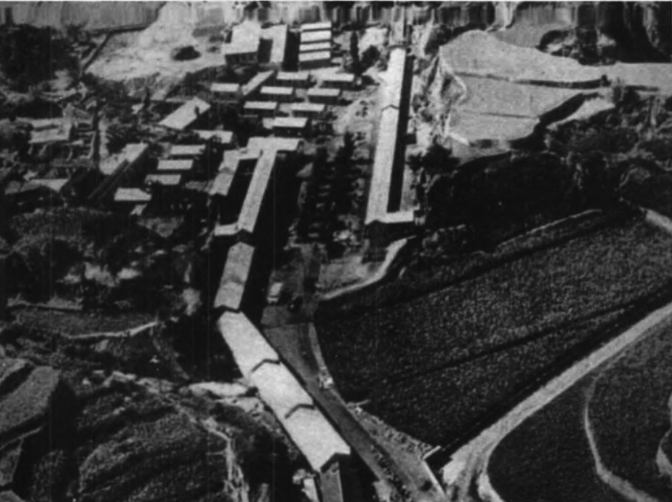Dazhai Village 大寨

Historical, political or economic context in which the plan/project is proposed
When in the late 1960s and 1970s, millions of Chinese people were sent to the countryside as part of the Cultural Revolution, Dazhai became the model of what the socialist countryside should have been. After a 1963 flooding, the village was entirely re-organised by its inhabitants, following collectivist principles and combining traditional cave dwellings in new typological arrangements. The redesign was not limited to the buildings; it involved the entire surrounding landscape re-shaped with terraced fields, hydraulic infrastructures, and plantations, revolutionising local agricultural production and becoming in time a (controversial) symbol of human preeminence over nature.
Bibliography
Salter C. L., “Dazhai Village, Shanxi. A Model Landscape.” In Chinese Landscape. The Village as Place, edited by R. Knapp, University of Hawaii Press, 1992.
Zhao Chunlan, Socio-spatial transformation in Mao’s China: settlement planning and dwelling architecture revisited (1950s-1970s), PhD thesis, Heynen Hilde (supervisor), Loeckx André (co supervisor), KU Leuven, 2007.
Zhao Jijun, Jan Woudstra, “In Agriculture, Learn from Dazhai: Mao Zadong’s Revolutionary Model Village and the Battle against Nature”, Landscape Research, no.32 (2), 2007.




